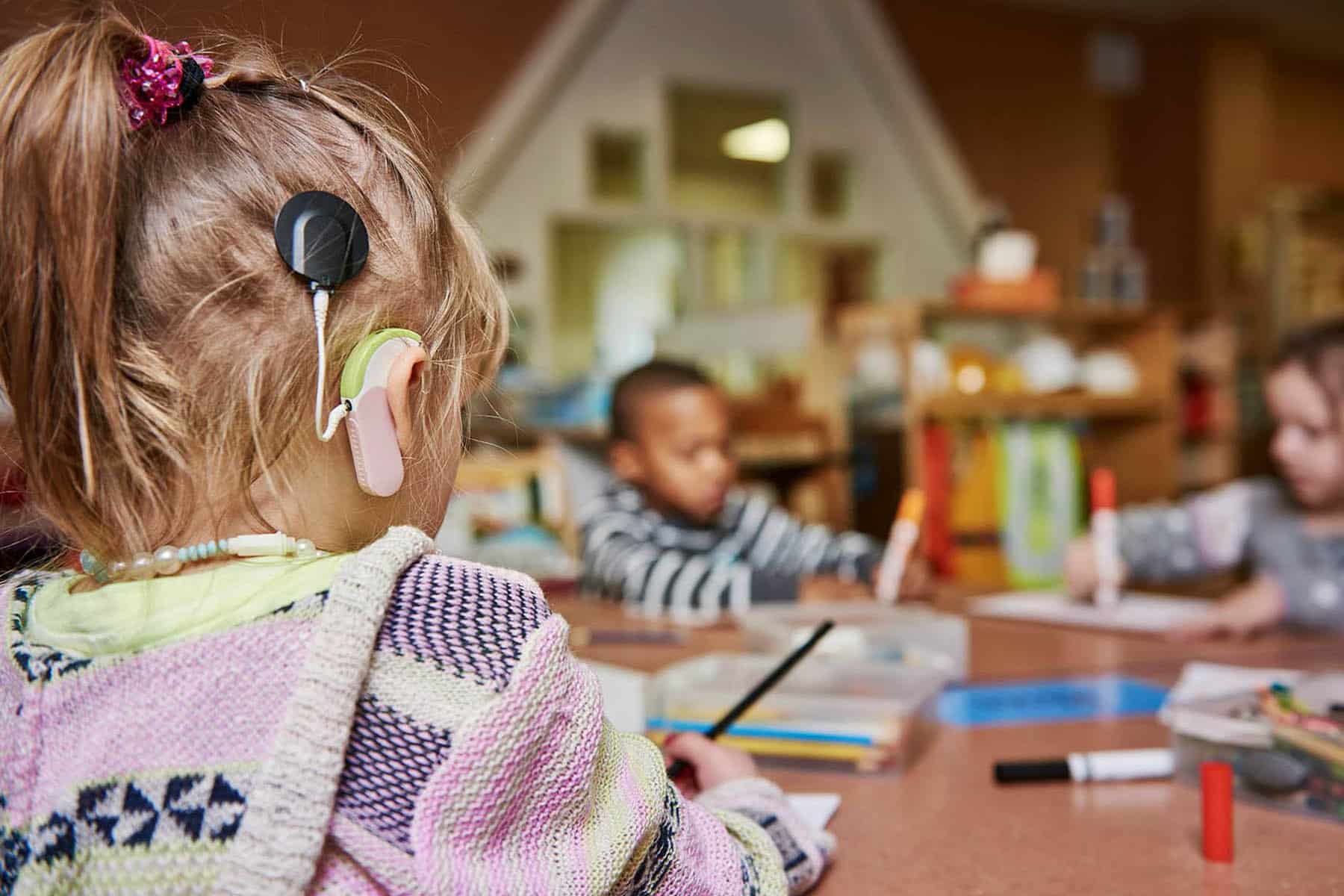It’s 2017, the beginning of a new year! You may be making resolutions and committing to all kinds of changes this month, but allow me to add another one to your plate. This year, will you join me in my quest to encourage all professionals who work with children with hearing loss to think about the development of speech skills through the lens of hearing?
When we think about helping children who are deaf or hard of hearing express themselves using intelligible speech, it’s tempting to emphasize the physical aspects of articulation: where to place the lips, tongue, or teeth to achieve the desired sound. But instead of focusing on the output to achieve clear speech, I invite you to think about the input instead. How clearly a child hears is directly related to the clarity of speech he is able to produce.
Why is this important? Think about how a typically-hearing baby learns to talk. She babbles in her bassinet, playing with her articulators (lips, palate, teeth, etc.) and hearing the sounds that she can make. Often, she makes a noise unintentionally, but the sound is so amusing, either to her or the adults giving her feedback, that she figures out how to make it again. As she grows, she begins to imitate the sounds and words of the language she hears around her. Barring any articulation disorders, a typically-hearing child learns to talk by soaking up the sounds of language and making the speech that comes out of her mouth match the speech she hears. Skills grow in a natural, developmental sequence. Why should it be any different for children with hearing loss? With today’s hearing technology, it doesn’t have to be!
So how do we achieve this? How do we help a child learn to talk through listening? It starts with ensuring high-quality auditory access. We can’t expect a child to use audition to develop speech unless we’ve given him the tools to do so!
What does this look like? It means using hearing technology all waking hours — be it hearing aids, cochlear implants, an FM system, or a combination of these — to make sure the child can hear across the frequency spectrum of speech in quiet and in noise. Aided thresholds alone are not enough, though. Those tell us what the child’s brain is doing with tones, but speech is not single-frequency tones, it is far more complex! This is why speech perception testing (in quiet and in noise) is key to understanding how the child is able to process spoken language input. A quality pediatric audiologist is your best friend here.
Once we have established that the child has good access to sound and the tools necessary to perceive spoken language, we can look at speech development through a “listening lens.” Often, with excellent access to sound and a stimulating environment, a child with hearing loss can develop the sounds of speech naturally through a developmental sequence much like his hearing peers with little direct intervention. But if errors do occur, don’t rush for the mirror and the popsicle sticks just yet! Here are some questions to consider that might help you:
- Can the child detect this sound? Does he have auditory access? If the answer is “no,” go back to the audiologist to ensure auditory access before beginning.
- Can the child discriminate this sound in a minimal pair (e.g. If the child is producing /t/ for /k/, can he tell the difference between “key” vs. “tea”)? Again, if the answer is “no,” go back to the audiologist to ensure auditory access before beginning.
- Is this sound developmentally appropriate? Check out a chart of speech sound development norms for your language. Consider both the child’s chronological age and hearing age, as well as the fact that boys and girls develop speech sounds at slightly different rates.
- How can I put this sound in a facilitative context to help the child hear and produce it better? This may mean acoustic highlighting, placing the target sound in a familiar word or a shorter word, or thinking about the properties of the surrounding phonemes that may make your target sound easier (or harder) to produce. For example, it’s easier to put the /s/ in snake than in skate, because /s/ and /n/ are made in the same place in the mouth.
So add another resolution to your list and put on a new set of lenses for 2017 — think about developing speech through listening.

Elizabeth Rosenzweig MS CCC-SLP LSLS Cert. AVT is a Speech-Language Pathologist and Listening and Spoken Language Specialist, Certified Auditory Verbal Therapist in private practice. She works with families around the world via teletherapy and writes on all things hearing loss on her website: www.AuditoryVerbalTherapy.net.












